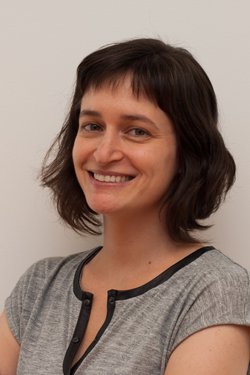Rachel Rosen
2013 Regional Award Winner — Post-Doc

Current Position:
Assistant Professor of Theoretical Physics
Institution:
Columbia University
Discipline:
Astrophysics & Cosmology

Current Position:
Assistant Professor of Theoretical Physics
Institution:
Columbia University
Discipline:
Astrophysics & Cosmology
Recognized for: Contributions to the theory of massive gravity
Areas of Research Interest and Expertise: Field theory, cosmology, particle physics
Biography:
PhD, Physics, New York University
BS, Mathematics and Physics, Brown University
Rachel Rosen applies methods of quantum field theory to cosmology and astrophysics. She is best known for her contributions to the theory of massive gravity. In Einstein’s general relativity, the graviton – the particle that transmits the gravitational force – is massless. Attempts to develop a theory in which the graviton has finite mass were largely unsuccessful, culminating in the 1972 work by Boulware and Deser, who showed that such a theory would contain an inconsistency, known as a ghost.
In 2010, de Rahm, Gabadadze, and Tolley (dRGT) developed a new massive gravity model. In 2011, Dr. Rosen and Dr. S. F. Hassan (Stockholm University) proved that the dRGT theory is free of ghosts, resolving the 40-year-old problem in favor of massive gravity. Together with Dr. Gabadadze (New York University), Dr. Rosen has also studied the astrophysics of helium-core white dwarfs, discovered a new state of matter in these objects (charged condensate), and made testable predictions for the cooling of such stars.
"There are still some outstanding puzzles that need to be solved—the question of the accelerated expansion of the universe is a big one that’s going to be interesting for a long time."
Key Publications:
Other Honors:
James Arthur Graduate Fellowship, New York University, 2007-2009
Henry M. MacCracken Fellowship, New York University, 2004-2009
R. Bruce Lindsay Prize for Excellence in Physics, Brown University, 2003